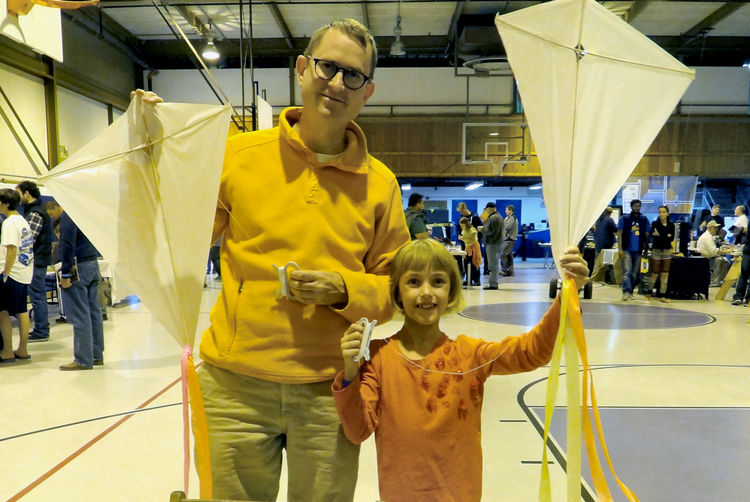STEM In The Community
The Science of Kite Flying

Flying a kite on a wide empty beach in late fall is a quintessential Cape Cod joy. Turns out it’s a great STEM activity, too.
That’s why we are thrilled that Glenn Davison, an expert kite flyer and kite builder will be at our STEM Journey on April 2, 2016. You won’t want to miss his interactive exhibit. It will definitely make you want to go fly a kite. And that kite might even be one you’ve built yourself.
Talking with Davison as we plan for April has given us an exciting sneak preview of the expertise he’ll be sharing then. And of the STEM in flying and building kites. We thought you’d want in on it, too.
When we asked him about the secrets of kite building, Davison talked first about the importance of practical experience. He says he always loved flying things—not just kites but model rockets and airplanes, too.
“I’ve flown every kite I can get my hands on,” he says. “And I’ve repaired my own kites and those of others.” Clearly, as he goes back and forth between working with kites and flying them, each experience supports the other.
“Making kites,” he says, “is really an engineering project, not an art project.” While we all think we know what a kite looks like, he says it’s not a good idea to jump from that image straight to construction.
“Just making something that looks like a kite is a recipe for disaster,” he says. It’s best to focus on the fundamentals that make a kite fly, then do the decorating later.
He’ll be teaching us more about those fundamentals in April, and how to execute them with precision—which, he points out, is also very important to success. They include:
- Respecting symmetry in size, weight, and flexibility.
- Including elements that add stability, such as tails, keels, and dihedral—this is a special word from geometry that describes the angle formed when two wings come together; getting that angle right helps a kite fly smoothly.
- Maintaining the proper ratio of area to weight.
- Keeping the kite as lightweight as possible.
- Setting the bridle—the strings between the kite and the flying line—to give the kite just the right “angle of attack.”
After all this discussion of design we wondered: what about the fundamentals of flying a kite? How does wind—or the amount of wind available—interact with the design elements?
Davison’s answer is that some kites can be adjusted for different wind conditions. For example, additional tails can help a kite fly in stronger wind. But kite fliers often switch kites to match the wind speed on the day they’re flying. If there’s strong wind they choose a kite with less sail area or a vented sail, strong spars and an increased dihedral. For a light wind, a larger, lightweight kite flies best.
There’s so much to think about regarding the relationship between design elements and kite flying that Davison has written a book about it called, “How to Fly a Kite.”
The more you listen to him, the more kite questions come to mind. We wondered if there might be any limitations to how big or how small a kite can be. Well, the largest kite is over 11,000 square feet and the smallest kite is less than one inch. “That is a very broad range,” Davison says. “Most people would consider that to be no limitation at all.”
What about those times when flying a kite doesn’t work so well? Davison says he has had that experience. But trying again has its rewards. In fact, he remembers the moment that really got him into kite flying: “it was when I flew a two-line kite for the first time.”
It wasn’t really the first time though. “I had tried it before when there wasn’t enough wind.” When he tried it again, the conditions were right and “it was a blast.”
Glenn Davison lives in Chelmsford, Massachusetts. He went from his kite-flying childhood into a career in software training. Now that he is retired, he’s busy with kite-building and flying again. Davison has three kite books called, "Miniature Kites," “Indoor Kite Flying,” and the “Kite Workshop Handbook.” Anyone interested in a kite presentation or workshop can reach him at davisong@verizon.net